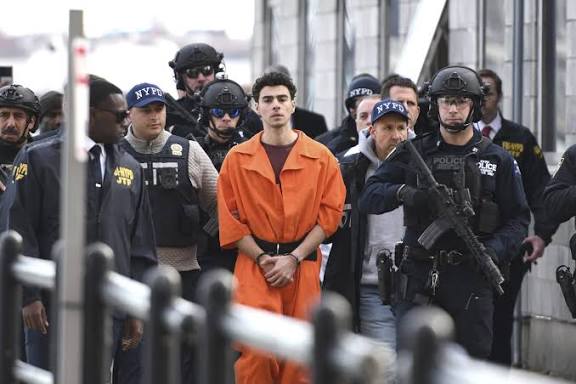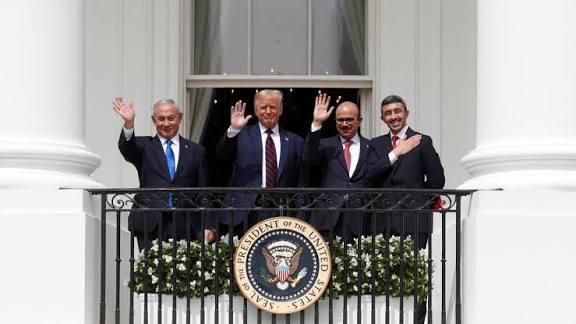Luigi Mangione News update: New Bid to avoid Death Penalty,website,shooting

Lawyers for Luigi Mangione say a New York federal judge should dismiss criminal charges, including death-eligible cases. Today we will discuss about Luigi Mangione News update: New Bid to avoid Death Penalty,website,shooting
Luigi Mangione News update: New Bid to avoid Death Penalty,website,shooting
Luigi Mangione’s case has become one of the most widely discussed criminal proceedings in the United States, intertwining themes of corporate power, healthcare policy, and the federal death penalty. As of October 2025, Mangione is once again in headlines for a new legal strategy aimed at avoiding capital punishment in the high-profile killing of UnitedHealthcare CEO Brian Thompson.
This article explores the full story—from the shooting incident and ongoing trials to the defense’s recent bid to have death-eligible charges dismissed, the public campaign surrounding his case, and what lies ahead in the months to come.
Background of the Case

Luigi Mangione, a 27-year-old New Yorker, was arrested in December 2024 in connection with the shooting death of Brian Thompson, the chief executive of UnitedHealthcare. The murder took place outside a luxury hotel in Midtown Manhattan where Thompson was attending his company’s annual investor event.
Investigators say Mangione fled the scene on an electric bicycle after allegedly firing multiple rounds. He was arrested five days later in Altoona, Pennsylvania, after being recognized by a fast-food restaurant employee who had seen his image in a law enforcement bulletin. Following his arrest, Mangione waived extradition and was transferred to New York City, where he remains held at the Metropolitan Detention Center in Brooklyn.
The case has since evolved into a legal and political flashpoint, involving parallel prosecutions under both state and federal jurisdictions. Federal prosecutors filed counts of murder by firearm, use of a firearm during a crime of violence, and stalking resulting in death. The inclusion of those federal charges means Mangione is eligible for the death penalty if convicted.
Meanwhile, the state case originally included terrorism-related murder charges, which were later dismissed. However, Mangione still faces second-degree murder and weapons charges under New York law. He has pleaded not guilty to all counts.
The Shooting and Alleged Motive
According to investigators, Brian Thompson was attacked on the morning of December 4, 2024, as he arrived for a corporate event. Surveillance video allegedly captured Mangione waiting near the hotel before firing a silenced handgun. Thompson was hit multiple times and pronounced dead at the scene.
Prosecutors have claimed that the act was premeditated and ideologically motivated. They allege that Mangione harbored resentment toward the health insurance industry and viewed Thompson as a symbol of corporate greed and patient exploitation.
Among the evidence cited in court filings are diary entries and written materials found in Mangione’s apartment, expressing anger toward insurance companies. Some entries included phrases such as “deny, delay, depose,” which prosecutors argue reflect an obsession with healthcare bureaucracy.
Mangione’s defense team, however, insists that this portrayal is misleading and that the writings have been taken out of context. They maintain that Mangione’s mental health, political beliefs, and personal grievances have been distorted by the prosecution and the media to create a sensational narrative.
The New Legal Bid to Avoid the Death Penalty
In October 2025, Mangione’s lawyers filed a sweeping motion in federal court seeking dismissal of several charges, including the death-eligible count. The defense argues that the underlying stalking charges used to support the murder count do not qualify as “crimes of violence” under federal law, thereby invalidating the basis for seeking capital punishment.
The defense also contends that key evidence—particularly items seized from Mangione’s backpack and statements he allegedly made upon arrest—should be suppressed. They argue that law enforcement officers violated his constitutional rights by failing to provide Miranda warnings and by conducting a search without a valid warrant. If successful, this motion could significantly weaken the prosecution’s case.
The attorneys further requested that the Department of Justice be barred from pursuing the death penalty entirely, claiming that such a move would be politically motivated and inconsistent with due process. Legal observers note that while the death penalty remains on the table, federal juries rarely recommend capital sentences, making its application uncertain.
This new motion marks the latest phase in a defense strategy aimed at dismantling the most severe components of the case while challenging the constitutionality of federal statutes used to elevate the charges.
Dismissal of State Terrorism Charges
In September 2025, a major development shifted the state case in Mangione’s favor. A New York Supreme Court judge dismissed two terrorism-related murder counts, ruling that prosecutors failed to demonstrate that Mangione acted with intent to influence government policy or intimidate a civilian population—criteria required under New York’s anti-terrorism law.
The judge noted that while the killing was “unquestionably grave and deliberate,” it did not meet the legal threshold for terrorism. The remaining charges of second-degree murder and criminal possession of a weapon remain active, ensuring that the case proceeds in state court but without the political and symbolic weight of terrorism allegations.
For Mangione’s defense, this dismissal represented a small but significant victory, reducing both the stigma and potential sentencing exposure under state law.
Courtroom Motions and Defense Strategies
Mangione’s legal team has filed multiple motions addressing not just the charges but also courtroom conditions and trial fairness. Among them is a request that he not be shackled or required to wear a bulletproof vest during court appearances. His lawyers argue that such measures prejudice jurors by creating the impression that he is dangerous or violent.
Another motion seeks to limit public commentary from government officials, citing concerns that statements from the Department of Justice could taint potential jurors. A federal judge has already cautioned prosecutors and political figures against making extrajudicial comments about the case, emphasizing the need to protect Mangione’s right to a fair trial.
The defense has also raised the issue of double jeopardy, suggesting that overlapping charges between state and federal courts could constitute multiple prosecutions for the same conduct. While this argument faces an uphill battle, it adds to the complexity of a case already burdened by procedural and jurisdictional questions.
The Official Defense Website
To counteract what his attorneys describe as biased media coverage, the defense team launched an official website, luigimangioneinfo.com. The site provides case updates, legal filings, press statements, and personal messages purportedly from Mangione.
The site’s mission is to “promote transparency and fairness” and to challenge what the defense characterizes as a politically motivated prosecution. It frames the federal pursuit of the death penalty as a violation of constitutional principles and labels it a “state-sponsored execution.”
The website has also become a digital hub for supporters, many of whom view Mangione as a symbol of resistance against corporate corruption and state power. The defense frequently updates the site with statements criticizing the Department of Justice, summarizing court proceedings, and providing official responses to media reports.
Online Support and Public Attention
From the beginning, the Mangione case has attracted enormous social media attention. Some online groups portray him as a whistleblower or activist figure, while others see him simply as a violent criminal.
Several crowdfunding efforts were launched to support his legal defense. While mainstream platforms removed some campaigns due to policies against raising money for defendants in violent crimes, alternative donation platforms continued to host fundraisers.
Images from courtroom appearances—often highlighting Mangione’s calm demeanor, distinctive fashion, and emotional expressions—have gone viral, further fueling his notoriety. In some circles, his persona has evolved into a strange mix of criminal infamy and countercultural celebrity.
The growing online discourse has led to increased polarization, with one side demanding harsh punishment and the other calling for a reassessment of corporate influence and justice system bias. For the court, managing this media environment has become an ongoing challenge.
Constitutional Challenges and Suppression Motions
The defense’s core constitutional challenges center on the Fourth, Fifth, and Eighth Amendments.
-
Fourth Amendment Violations – Lawyers argue that the search of Mangione’s backpack was illegal and that the evidence obtained should be excluded from trial. This includes the alleged murder weapon, ammunition, and documents linking him to the scene.
-
Fifth Amendment Violations – The defense claims Mangione was questioned without proper Miranda warnings, rendering his statements inadmissible.
-
Eighth Amendment Arguments – The motion opposing the death penalty frames capital punishment as cruel and unusual in this case, emphasizing his age, mental health, and alleged procedural flaws in the indictment.
If the court agrees with even part of these arguments, prosecutors could lose critical evidence and see the scope of the case reduced dramatically.
Political and Legal Implications of the Death Penalty
The Mangione case has emerged during a renewed debate over the federal death penalty. The Department of Justice has recently revived capital punishment in select high-profile cases, viewing it as a deterrent to politically motivated killings.
However, public opinion remains divided. Many Americans oppose capital punishment or question its fairness, citing racial, economic, and procedural disparities. Legal analysts say that securing a federal death sentence is increasingly difficult due to the need for unanimous jury agreement and automatic appellate review.
If Mangione’s defense successfully bars prosecutors from seeking the death penalty, it could influence how future capital cases are handled—especially those involving ideological or symbolic crimes rather than serial or mass violence.
HIPAA and Privacy Issues
An unusual feature of the Mangione prosecution is its intersection with healthcare privacy law. Because the victim was the head of a major insurance corporation, prosecutors have introduced internal corporate communications and healthcare data into evidence. The defense argues that some of this information may fall under federal privacy protections like HIPAA and should not be used in open court.
This debate highlights how corporate leadership, personal privacy, and criminal prosecution can overlap in complex ways—especially when the alleged motive is tied to public policy or industry practices.
The Broader Public Reaction
Luigi Mangione’s trial has become a cultural spectacle. Outside the courtroom, protesters, journalists, and supporters frequently gather, waving signs or chanting slogans. Some groups call him a murderer who deserves the harshest punishment; others claim he is being persecuted for exposing systemic flaws in healthcare and governance.
In online spaces, hashtags like #FreeLuigi and #JusticeForBrianThompson often trend simultaneously, showing the polarized nature of public opinion. Social media influencers, commentators, and even fashion bloggers have commented on Mangione’s courtroom appearances and statements from his supporters.
This extraordinary media attention has transformed the trial into more than a legal battle—it’s become a reflection of modern America’s divisions around justice, power, and morality.
Current Status and Upcoming Court Dates
As of October 2025, Mangione remains in custody awaiting trial. The next major state court hearing is set for December 1, 2025, while the federal case is expected to proceed to a pretrial conference on December 5, 2025. Both courts may finalize trial dates early next year.
Observers anticipate that the federal case will likely go first, given the seriousness of the charges and the pending death penalty motion. Depending on how the judge rules, the outcome of that motion could determine whether the case proceeds as a capital prosecution or as a non-capital murder trial.
If convicted in federal court, Mangione faces either the death penalty or life imprisonment without parole. A conviction in state court could add 25 years to life to his sentence. His defense has indicated it will appeal any unfavorable rulings.
Possible Outcomes
-
Death Penalty Rejected – The most immediate goal of the defense is to eliminate the death penalty option. If the judge agrees, the case would proceed as a standard federal murder prosecution.
-
Life Imprisonment – Even without the death penalty, a conviction could result in life behind bars.
-
Partial Dismissals – Successful suppression motions could lead to dismissal of specific counts or reduction in sentencing severity.
-
Acquittal or Mistrial – While unlikely given the evidence, a hung jury or legal technicalities could delay or overturn proceedings.
-
Appeals and Constitutional Review – Whatever the verdict, the case is almost certain to undergo lengthy appeals on constitutional grounds.
Conclusion
The saga of Luigi Mangione continues to captivate the nation. What began as a shocking act of violence has evolved into a multifaceted legal, political, and cultural drama. His attorneys’ new bid to avoid the death penalty could redefine the contours of federal capital punishment policy, while the public debate surrounding his trial raises deep questions about justice, corporate power, and media influence.
As 2025 draws to a close, Mangione’s fate remains uncertain—but one thing is clear: his case will continue to test the boundaries of law, politics, and public perception in America’s criminal justice system.
How useful was this post?
Click on a star to rate it!
Average rating 0 / 5. Vote count: 0
No votes so far! Be the first to rate this post.
About the Author
usa5911.com
Administrator
Hi, I’m Gurdeep Singh, a professional content writer from India with over 3 years of experience in the field. I specialize in covering U.S. politics, delivering timely and engaging content tailored specifically for an American audience. Along with my dedicated team, we track and report on all the latest political trends, news, and in-depth analysis shaping the United States today. Our goal is to provide clear, factual, and compelling content that keeps readers informed and engaged with the ever-changing political landscape.




